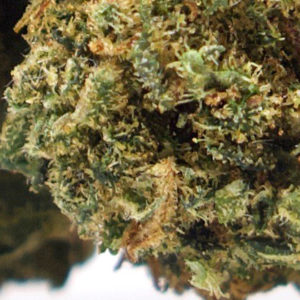Phytol – What Is It? All You Need To Know About Phytol

Phytol
fī-ˌtȯl | Noun
A diterpene alcohol with an oily consistency and a grassy aroma. This terpene is chlorophyll’s byproduct and is used to synthesize Vitamins E and K1. Naturally occurring in green tea, it’s known for its mild sedative effect and antioxidant properties. Present in hemp in trace amounts, research is investigating its potential anti-inflammatory and anti-convulsive qualities.
“This cup of matcha is loaded in antioxidants such as phytol.”
“This multivitamin bottle contains Vitamin E made with phytol, which is an organic compound also found in hemp.”
What is it?
It’s a diterpene alcohol used as a precursor for the manufacture of synthetic forms of Vitamin E and Vitamin K1. This terpene has an oily consistency and exhibits a yellow pigment often used in food dyes. Compared to other intensely aromatic terpenes, such as geranyl, this terpene has a grassy scent that’s not nearly as aromatic.
Everyday uses of phytol
If you love green tea varieties, you’ll be glad to hear that matcha and sencha are abundant in this terpene. You‘ve also experienced it in multivitamins or vitamin supplements that contain Vitamin E, or Vitamin K. The phytol terpene is the precursor to these two vitamins and a byproduct of chlorophyll. Like many terpenes, it’s used in the commercial fragrances industry and as an ingredient in cosmetics, shampoos, detergents, and household cleaners.
Therapeutic benefits of phytol
More research in humans is needed, but so far, we know of the potential antibacterial, anti-inflammatory, and antioxidant effects of this terpene.
Antioxidant properties
One 2016 study published in Current Pharmaceutical Biotechnology revealed that this terpene offers potential for preventing or treating diseases mediated by oxidative stress. A list of such conditions includes heart disease and neurodegenerative disorders.
Another study published in 2013 found that this terpene offers substantial pain relief in animals. According to the authors of the study, these effects are partly due to the terpene’s antioxidant properties. It’s important to mention that phytol is a significant component of green tea, which is a widely known antioxidant.
Anti-inflammatory effects
Inflammation and pain often go hand in hand, so many organic compounds that fight inflammation tend to display pain-relieving properties. This terpene is no exception, as several studies testify for its anti-inflammatory and analgesic effects.
Anticonvulsant and anti-anxiety properties
The promising anti-anxiety and anticonvulsant activities of this terpene come from the shared mechanism or the brain’s use of the GABA neurotransmitter. Considered an inhibitory neurotransmitter, GABA blocks or inhibits certain brain signals and decreases activity in the nervous system. It helps fight feelings of anxiety and stress because it attaches to a GABA receptor to produce a calming effect. Most of the studies relating to these properties are conducted on animals, so human research is needed to verify these findings.
Other potential benefits
Aside from being recognized for its mild sedative properties, this terpene may help prevent congenital disabilities caused by Vitamin A. Further research is needed, but one 2002 study published in the journal Society of Toxicology revealed that phytol has potential to prevent such disabilities.
Like many terpenes, it also possesses the ability to fight certain parasites. Researchers investigated the effects of thighs terpene on a major endemic disease in animals, and it showed promising results.
Where to find it in hemp?
In hemp, you can find it in some strains in trace amounts. You may also encounter it in full spectrum and broad spectrum hemp CBD products, including concentrates. As a minor terpene, phytol contributes to the entourage effect or the theory that hemp compounds work synergistically to enhance the plant’s healing and psychoactive properties. Anecdotal evidence shows that in cannabis — where it’s present in some strains in higher percentages — it induces a mild relaxing and sedative effect.
Final thoughts
A less aromatic terpene known for its antioxidant and anti-inflammatory properties. This minor hemp terpene is also a vitamin precursor and exhibits mild sedative effects.













